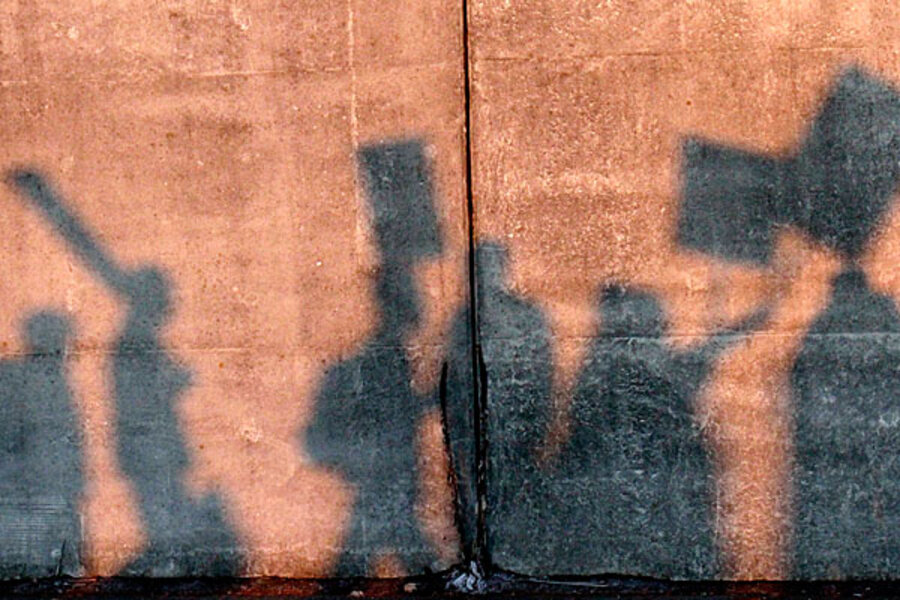Why is Occupy Wall Street now trying to occupy West Coast ports?
Loading...
| Los Angeles
Occupy Wall Street's call for port closures up and down the West Coast Monday is an ambitious effort to determine just how viable the movement can be without its symbolic tent encampments.
Many people, both inside and outside the movement, are questioning whether the Occupy movement can survive on daily actions alone. The idea behind Monday's action was to shut down ports in a effort to cut into multinational corporations' profits.
The success or failure of the marches will offer some clues as to whether the movement will become increasingly marginalized without the persistent presence of their encampments, says George Ciccariello-Maher, a professor of history and politics at Drexel University in Philadelphia.
Depending on how it plays out, “this is the sort of event that could catalyze momentum for the entire movement,” he says.
Success means numbers – how many people turn out, and how many ports are shut down for how long, he says.
But success also means getting the message out to more people. He notes that the movement has been successful in driving a national narrative around topics such as income inequality and corporate influence in the political system. “What national figure hasn’t begun to talk about the 99 percent versus the 1 percent?” he asks.
Success for Monday’s actions will mean continuing to keep that message in the national dialogue, he adds.
Protesters managed to shut down port operations in both Portland, Ore., and Longview, Wash., while solidarity actions were held as far away as Houston, Salt Lake City, and Japan.
But elsewhere, numbers were not always on Occupy's side. Occupy Los Angeles faced driving morning rain and a well-prepared police presence at the Long Beach port.
“We were expecting a lot more people to turn out,” says Lisa Clapier, a member of the Occupy LA media team, noting that some 500 activists turned up. On the other hand, she notes, “that’s pretty good for a freezing, day with hard rain.”
By mid-morning, the effort had been completely dispersed, with many marchers peeling off to join a solidarity migrant worker’s march in downtown Los Angeles. “We are not discouraged,” she says, adding that the effort was an important statement about the value of non-violent protests.
Marchers in Oakland, Calif., did manage to sporadically shut down traffic in and out of various terminals at the Oakland port, says Oakland Port spokesman Isaac Kos-Read. But he questions the value of the effort. “This is hurting the very working people the movement claims to represent,” he says.
Longshore workers were sent home after shipping companies and union representatives agreed that the working conditions had become unsafe. “Those actions did nothing to further the needs of working families,” he says.
Others on the scene suggest that the message of today is the growing power of the Occupy movement to mobilize average folks around an idea.
Spencer Mills, an Oakland native, says he has been “underemployed” working in a gym for past two years after graduating with an MBA and finding no career path. He is now covering the Occupy movement full time, live-streaming video directly from his phone to the Internet. He notes that his coverage has been getting as many as 200,000 views.
“We are keeping the story alive,” he says, adding that the calendar of actions is only accelerating, with actions in Washington and New York in the next month.





